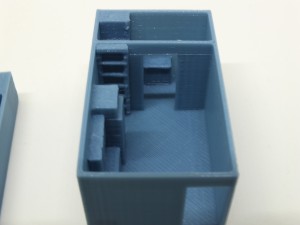For Science and Tech we had the task of researching and designing a tiny home. A tiny home is a really small house, usually for one or two people to live in. The main benefits of a tiny home is the low price in comparison to a regular house, because they are smaller. They can vary in price depending on their size, but from what we have seen in our research they tend to be quite cheap.
Before we designed our tiny home, our group (the two of us) decided that we would print out our tiny home. In order to make this happen, we did the research on CADs (Computer Aided Design) and planned it out on paper. We then went on to populate it with furniture and estimate the costs. First we designed the general structure of our building, then put in the furniture (which looks like a bunch of rectangular prisms). We made sure that when we designed it digitally, we used a CAD that we knew we would save in a file type that would be compatible with our slicer.
The CAD we decided to use was FreeCAD, because it was free and open source, but mainly because it was free. Since we aren’t exactly CAD experts our design was pretty basic. As you can see in the picture below (If you use your imagination you might be able to see the fridge and some cabinets).
After a few hours of work between each of us, we finished our design. Once that was taken care of we saved it as a mesh file so that we could slice it. After slicing our design and scaling it down to a reasonable size so that it would fit on the print bed, we ended up printing it in PLA on the Ditto+. It took somewhere between 30mintues to an hour to print and turned out pretty well.
After inspecting the print, I was surprised to see how well the arch above the doorway worked out. Neither of us had even thought about the possibility of it being a problem until we saw that it had worked. That’s a quick summary of our process for our tiny home design.

